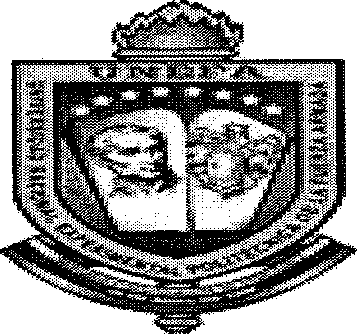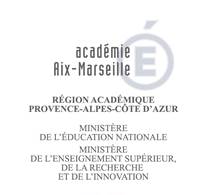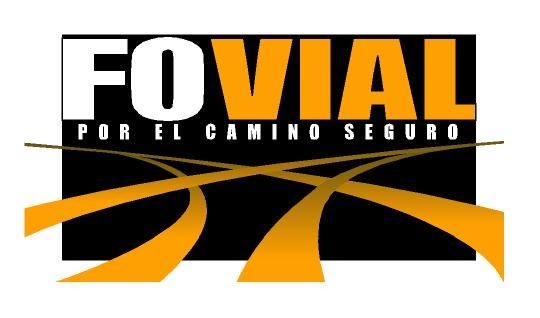meeting of the clearing-house mechanism informal advisory committee 9 november 2003, montreal, canada present at the meeting were:
Meeting of the Clearing-House Mechanism Informal Advisory Committee
9 November 2003, Montreal, Canada
Present at the meeting were:
Members:
Asghar Mohammadi Fazel (Iran, Co-Chair)
Bonnie Carroll (IABIN)
Han de Koeijer (Belgium)
James Edwards, Beatriz Torres, Christoph Hauser (Global Biodiversity
Information Facility)
Horst Freiberg (Germany)
Jeremy Harrison (World Conservation Monitoring Centre)
John Herity (Canada)
Christian Samper (Smithsonian Institute)
Observers:
Peter Herkenrath (BirdLife International)
James Seyani (Commonwealth Knowledge Network)
Secretariat:
Arthur Nogueira, Principal Officer, Implementation and Outreach
Marcos Silva, Programme Officer, Clearing-house Mechanism
David Ainsworth, Website Programme Officer
Item 1: Opening of Meeting
On behalf of Mr. Hamdallah Zedan, Executive Secretary, Mr. Arthur
Nogueira, Principal Officer welcomed Informal Advisory Committee (IAC)
members to the meeting. He also welcomed Mr. Asghar Fazel from Iran as
the new Co-Chair of the IAC and thanked Mr. Guy Rochon from Canada for
his contribution during his tenure as Co-Chair. Mr. Nogueira also
stressed the important role of the IAC in offering guidance to the
Executive Secretary in the development and implementation of the CHM’s
programme of work and highlighted many of the Clearing-House
Mechanism’s (CHM) accomplishments during the inter-sessional period.
He concluded his opening remarks by thanking participants for their
contribution to the CHM and wished everyone a successful meeting.
Mr. Asghar Fazel, welcomed participants and thanked the Secretariat
and the IAC for their support and endorsement of his nomination as
Co-Chair. He noted the exceptional work completed by Mr. Guy Rochon
and thanked him for his contribution to the work of the CHM and the
Convention. Mr. Fazel also indicated his desire that the IAC continue
its work by offering advice on the CHM to the Executive Secretary,
particularly within the context of the 2010 target and the upcoming
seventh meeting of the Conference of the Parties. He concluded by
thanking participants for their participation and work.
Item 2: Organizational Matters
==============================
This agenda item was introduced by M. Silva
Item 2.1. Adoption of Agenda
The agenda was adopted (see Annex 1).
Item 2.2. Organization of Work
The meeting agreed with the organization of work described in the
provisional agenda.
Item 3: Report on implementation of the activities identified in Annex
II of Decision V/14 and Decision VI/18 of the Conference of the
Parties
----------------------------------------------------------------------
In introducing this item, Mr. Fazel requested the Secretariat to
present a brief overview of activities accomplished in support of
Annex II of Decision V/14 and Decision VI/18.
The Secretariat gave a brief presentation on the initiatives
accomplished by the CHM, and explained that this work was based on
Conference of the Parties Decisions, SBSTTA recommendations, IAC
recommendations and the CHM Strategic Plan (UNEP/CBD/COP/5/INF/3, URL:
http://www.biodiv.org/doc/meetings/cop/cop-05/information/cop-05-inf-03-en.pdf).
The Secretariat also explained that the CHM followed a three-tiered
strategy to promote and facilitate technical and scientific
cooperation, including:
1.
Investment in the development and use of new formats, protocols
and standards and new information technologies;
2.
Development of new tools to foster communication and networking;
3.
Implementation of new activities in support of technical and
scientific cooperation within the context of the CBD programme
areas and cross-cutting issues.
Furthermore, activities in support of the use of new formats,
protocols and standards included:
*
Development of a CBD Controlled Vocabulary (http://www.biodiv.org/doc/cbd-voc.aspx)
to serve as metadata and assist national CHMs to become
interoperable;
*
Development and publication of metadata standards based on the
Dublin Core (http://www.biodiv.org/chm/toolkit/);
*
Enhancement of the Convention website to facilitate
interoperability with other information mechanisms and systems;
*
Development of a number of thematic databases;
*
Development of an XML-based (eXtensible Markup Language) facility
to search COP decisions and SBSTTA recommendations (http://www.biodiv.org/recommendations/search.aspx);
*
Development of a tool to analyze Thematic Reports (http://www.biodiv.org/reports/analyzer.aspx)
In support of activities related to fostering communication and
networking, The Secretariat described the following:
*
Development of virtual collaborative spaces for working groups;
*
Creation of new electronic forums for the public and working
groups;
*
Development of a new electronic notification system (http://www.biodiv.org/doc/notifications/registration.asp)
;
*
Establishment of an interactive info-bulletin on financing for
biological diversity (http://www.biodiv.org/financial/forums.aspx)
*
Establishment of a joint electronic calendar with UNCCD and UNFCCC
(http://unfccc.int/calendar/rioconv/index.html).
The Secretariat then described activities related to technical and
scientific collaboration, including:
*
Cooperation with other international organizations and initiatives
such as the Global Biodiversity Information Facility, the
Inter-American Biodiversity Information Network and the European
Environment Agency, among others, in capacity-building efforts;
*
The establishment of new international thematic focal points
(BirdLife International);
*
The organization of CHM regional workshops (the Latin American and
Caribbean and Central and Eastern Europe CHM regional workshops
were co-organized with the European Community Clearing-House
Mechanism and the Inter-American Biodiversity Information Network
respectively);
*
The development of a new online CHM toolkit (http://www.biodiv.org/chm/toolkit/)
to assist Parties and Governments to establish national CHMs and
CHM websites (the CHM Toolkit was a collaborative effort among the
European Community Clearing-House Mechanism, the Global
Biodiversity Information Facility, the Governments of The
Netherlands and Belgium);
*
The development of a joint project with the Government of The
Netherlands to assist one of two countries to develop their CHM
websites.
The Co-Chair thanked the Secretariat for its presentation, and opened
the floor for comments and questions.
Dr. Christian Samper asked on the status of CHM national focal points
and if it was possible to assess their effectiveness.
The Secretariat replied that to date, 148 out of 188 Parties had
established CHM National Focal Points. Out of these, 63% had
established websites. The Secretariat referred the question of
measuring national CHM effectiveness to the Chair, who then invited
Mr. Jeremy Harrison to present the Results of the independent review
of the Clearing-House Mechanism of the Convention on Biological
Diversity (UNEP/CBD/COP/7/INF/12,
http://www.biodiv.org/doc/meetings/cop/cop-07/information/cop-07-inf-12-en.pdf)
which was overseen by the United Nations Environment Programme World
Conservation Monitoring Centre (UNEP-WCMC). The review was established
by a memorandum of cooperation between the Secretariat of the
Convention on Biological Diversity and UNEP-WCMC within the context of
its Chevening Biodiversity Scholarship.
Mr. Jeremy Harrison introduced the review emphasizing that it
discusses the role and effectiveness of national CHMs at length. He
also described the action plan presented at the end of the review, and
invited participants to analyze it carefully prior to the seventh
meeting of the Conference of the Parties (COP-7).
Participants agreed that recommendations pertaining to the review
could be made from the floor during the seventh meeting of the
Conference of the Parties.
Following the above discussion, the Chair invited Ms. Bonnie Carroll
to give a brief presentation on the Pacific Basin Information Forum
(PBIF) meeting held as a side meeting at the Joint Forum meeting in
Tsukuba, Japan on 4 to 5 October 2003. On completion of her
presentation, Ms Carroll asked if the Secretariat was planning an Asia
CHM regional workshop, especially given the potential for
collaboration with the PBIF in capacity-building activities.
The Secretariat replied that a CHM regional workshop for Asia is being
planned, but has been delayed because of a lack of funds.
The Co-Chair offered to look into the possibility of hosting the
meeting in Iran.
The Co-Chair then gave the floor to Dr. James Edwards, who reported on
workshops on becoming a Global Biodiversity Information Facility
(GBIF) data provider. Mr. Edwards discussed possibilities to better
link GBIF’s technical courses with the Secretariat’s capacity building
projects. It was agreed to continue these efforts, and to attempt to
organize joint meetings whenever possible, the upcoming GBIF Governing
Board Meeting in New Zealand being a case in point.
Dr. Christian Samper asked the Secretariat to report on the status of
recently established international thematic focal points and to
comment if any of these new relationships had been evaluated for
effectiveness. Discussion followed on the origins of Annex II (c) of
Decision V/14 which asks the Executive Secretary to identify and
establish cooperation arrangements with those international thematic
focal points that can provide relevant an appropriate thematic
information.
There was agreement that an evaluative procedure for international
thematic focal points may be required, and that Annex II (c) of
Decision V/14 requires more in-depth discussion and review.
It was further agreed that that IAC members would brief their
respective delegations on this issue and request that a recommendation
be made from the floor during the seventh Meeting of the Conference of
the Parties for the Executive Secretary to develop an evaluative
procedure for programmes established with international thematic focal
points.
On conclusion of discussions, the Co-Chair requested the Secretariat
to report on CHM regional workshops in Africa, Latin America and the
Caribbean and Central and Eastern Europe.
The Secretariat reported that the CHM African regional workshop held
in Nairobi, Kenya on 31 March to 2 April 2003 (http://www.biodiv.org/doc/meeting.aspx?mtg=CHMAFR-01)
counted on the participation of many international organizations and
international thematic focal points. It offered national CHMs the
opportunity to meet with these organizations and thematic focal points
and discuss ways and means to raise capacity at the national and
regional level.
With regard to the CHM Latin America and Caribbean Meeting (Joint
Latin America and Caribbean regional meeting on the Clearing-House
Mechanism and the Inter-American Biodiversity Information Network:
building partnerships through effective networking,
http://www.biodiv.org/doc/meeting.aspx?mtg=CHMIBIN-01), held on 12 to
14 August 2003, in Cancun, Mexico, CHM national focal points benefited
from the participation, co-funding and co-organization of the
Inter-American Biodiversity Information Network (IABIN). Discussion
centered on enhancing the capacities of CHM national focal points and
on the establishment of the IABIN. The meeting also offered the
opportunity for CHM national focal points to comment and offer advice
on the drafting of IABIN’s Project Implementation Plan, particularly
with regard to IABIN’s relationship to the CHM.
The CHM regional Central and Eastern Europe meeting (Convention on
Biological Diversity Clearing-House Mechanism and European Community
Clearing-House Mechanism joint regional meeting for Central and
Eastern Europe, http://www.biodiv.org/doc/meeting.aspx?mtg=CHMEC-01)
constituted the first Pan-European meeting of CHM national focal
points. There was much discussion on the establishment of joint
programmes, particularly with regard to the use and development of
common formats, protocols and standards and joint initiatives in
support of the programme areas and cross-cutting issues of the
Convention.
IAC participants welcomed the organization of these workshops, and
reiterated the need for a CHM regional workshop in Asia.
Item 4: Progress report on the Biosafety-Clearing House
The Secretariat gave a brief presentation on the technical work
completed in support of the Biosafety Clearing-House (BCH). It stated
that the BCH is ready for use and that the Secretariat will receive
further direction on its development from the upcoming first meeting
of the COP serving as the meeting of the Parties to the Cartagena
Protocol on Biosafety to be held in Malaysia from 23 to 27 February
2004.
Mr. Han de Koeijer remarked that in African countries, the most active
national BCHs appear to be those with active CHMs, indicating perhaps
possibilities for increased synergies between the two mechanisms. He
also mentioned that it is important for developing countries to
integrate both mechanisms as much as possible to avoid duplication of
work and maximize available resources. He wondered if an informal
advisory group for all mechanisms could be an effective tool for
promoting greater synergies at the national level.
The Co-Chair asked if participants believed that there is a perception
that the BCH is totally independent from the CHM and if countries
realize that the BCH is indeed part of the CHM.
In response, Mr. Horst Freiberg asked if reference to the CHM could be
made more explicit on the BCH website, and if this could be
implemented as soon as possible.
The Secretariat stated that it would raise this issue with the
Executive Secretary.
Item 5: Other matters
The Co-Chair requested the Secretariat to present a paper drafted by
Ms Paula Warren (New Zealand) on issues related to technology transfer
and cooperation and the CHM.
Following introduction of the paper by the Secretariat, discussion
ensued on how the CHM can become a more effective partner in this
process.
It was decided that the IAC would raise these issues in greater detail
during COP-7 and during the current SBSTTA-9 meeting.
Item 6: Closure of Meeting
The meeting was closed at 12:30 hours by the Co-Chair, on behalf on
the Executive Secretary, who thanked all participants for a
constructive and most productive meeting.
Meeting of the Informal Advisory Committee
to the Clearing-house Mechanism of the Convention on Biological
Diversity
Montreal, Canada
9 November 2003
PROVISIONAL AGENDA
1.
Opening of the meeting
2.
Organizational matters:
1.
Adoption of the agenda
2.
Organization of the work
3.
Report on implementation of the activities identified in Annex II,
Decision V/14 and Decision VI/18 of the Conference of the Parties
to the Convention on Biological Diversity
4.
Progress report on the Biosafety Clearing-House
5.
Other matters
5.
Closure of the meeting
8
 S TICHTING WELLUSWIJS KINDEROPVANG EN CHRONO SCHOLEN ZIJN EEN
S TICHTING WELLUSWIJS KINDEROPVANG EN CHRONO SCHOLEN ZIJN EEN LABORATORIO DE FÍSICA II PRACTICA NO 4 ELECTROSTÁTICA ELABORADO
LABORATORIO DE FÍSICA II PRACTICA NO 4 ELECTROSTÁTICA ELABORADO SOLICITUD DE MATRÍCULA CURSO ACADÉMICO 20212022 “CURSO INTENSIVO EN
SOLICITUD DE MATRÍCULA CURSO ACADÉMICO 20212022 “CURSO INTENSIVO EN REGIÓN DE MURCIA CONSEJERÍA DE SANIDAD SOLICITUD DE CONTINUIDAD
REGIÓN DE MURCIA CONSEJERÍA DE SANIDAD SOLICITUD DE CONTINUIDAD РОССИЙСКАЯ ФЕДЕРАЦИЯ КРАСНОЯРСКИЙ КРАЙ ТАЙМЫРСКИЙ ДОЛГАНОНЕНЕЦКИЙ МУНИЦИПАЛЬНЫЙ РАЙОН АДМИНИСТРАЦИЯ
РОССИЙСКАЯ ФЕДЕРАЦИЯ КРАСНОЯРСКИЙ КРАЙ ТАЙМЫРСКИЙ ДОЛГАНОНЕНЕЦКИЙ МУНИЦИПАЛЬНЫЙ РАЙОН АДМИНИСТРАЦИЯ ACADEMIE DAIXMARSEILLE ANNEXE 8 2 2 ATTESTATION CONCERNANT
ACADEMIE DAIXMARSEILLE ANNEXE 8 2 2 ATTESTATION CONCERNANT F ONDO DE CONSERVACION VIAL UNIDAD DE ADQUISICIONES Y
F ONDO DE CONSERVACION VIAL UNIDAD DE ADQUISICIONES Y MATH 131 PROBLEM SET 5 ADRIAN ILIE THIS PROBLEM
MATH 131 PROBLEM SET 5 ADRIAN ILIE THIS PROBLEM OBRAZEC REZLISTPOLJ02 OBČINA POLJČANE BISTRIŠKA CESTA 65 2319 POLJČANE
OBRAZEC REZLISTPOLJ02 OBČINA POLJČANE BISTRIŠKA CESTA 65 2319 POLJČANE LEY FEDERAL DEL IMPUESTO SOBRE AUTOMÓVILES NUEVOS CÁMARA DE
LEY FEDERAL DEL IMPUESTO SOBRE AUTOMÓVILES NUEVOS CÁMARA DE CORPORATE DIRECTORATE FOR GROWTH ENTERPRISE AND ENVIRONMENT BUILDING CONTROL
CORPORATE DIRECTORATE FOR GROWTH ENTERPRISE AND ENVIRONMENT BUILDING CONTROL